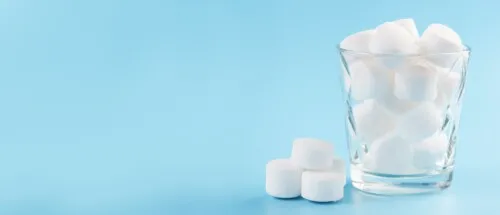Every year, your water utility sends out a report that tells you exactly what’s in your tap water. It’s called a Consumer Confidence Report (CCR), and whether you rent or own, it’s worth a read. CCRs inform the public about where your water comes from, what’s been tested, and if it meets safety standards.
These reports are required by the Safe Drinking Water Act (SDWA), a law passed in 1974 to protect and regulate the public’s water supply. Although the SDWA was established a few decades prior, the CCR wasn’t implemented until 1998.
In this article:
- What is a Consumer Confidence Report (CCR)?
- Key Sections of a CCR and How to Interpret Them
- Violations and Exceedances
- How to Use Your CCR
- Becoming Aware of Your Water Quality
- Frequently Asked Questions
What is a Consumer Confidence Report (CCR)?
A CCR, or your annual water quality report, is an essential piece of information when it comes to understanding what’s in your tap water. It provides crucial information about the water we use every day in the U.S. According to the U.S. Environmental Protection Agency (EPA), all community water systems (CWS) must send the reports by July 1. If you don’t receive your copy by the specified time, you can contact your utility company, check your company’s website, or review the CCR inventory on the EPA’s website.
It is also important to note the report’s language requirements. If you live in an area with a high percentage of non-English speaking residents, a translated copy or other language assistance must be provided. According to the EPA, it is the responsibility of the state government or the EPA to determine which municipalities require multilingual reports.
Key Sections of a CCR and How to Interpret Them
It’s important to understand your annual CCR, and your drinking water quality and safety, in order to know if a water filtration system is necessary. Here’s what to look for and how to understand it:
Where Your Water Comes From
Each CCR includes a breakdown of the source of the area’s drinking water, whether it comes from local rivers, lakes, or aquifers. From there, it will explain the potential contaminants that each source type can have. Water sourced from aquifers or groundwater, for example, are known to have contaminants such as heavy metals, nitrates, microbes, sulfates, and iron.
What’s in Your Water
Although the source of your water section explains potential harmful contaminants, another section of your CCR outlines the specific detected contaminants present, measured against federal safety benchmarks. For EPA standards, these levels are known as Maximum Contaminant Levels (MCLs), which is the highest level of contamination a water supply can have without any known negative health effects.
Then there is the Maximum Contaminant Level Goals (MCLGs), which is the ideal target set by the EPA for zero health risk. The EPA notes that these goals aren’t always attainable, as they aren’t based on water treatment technology, but rather an ideal for the protection of vulnerable groups like children, seniors, or people with chronic illness. The MCLG is primarily focused on individuals who are most likely to be affected by water contaminants, such as infants, children, the elderly, and those with chronic illnesses or compromised immune systems.
The most common drinking water contaminants include:
- Biological: These include microorganisms such as bacteria, parasites, protozoa, and viruses.
- Chemical: Whether they occur naturally or are man-made, some common contaminants include heavy metals, herbicides, pesticides, salts, PFAS (also known as “forever chemicals”), and nitrogen.
- Physical: These are contaminants that can often be seen, such as sand and silt.
- Radiological: Any contaminants with unstable atoms like plutonium and uranium.
Understanding the Water Quality Data Table
In the CCR, there will be a report with several category columns. Each will tell you something slightly different about your tap water quality.

- Contaminants: Provides the different contaminants present in your drinking water.
- MCLG: This is the goal or ideal value of the contaminant level for public safety set by the EPA. You want the number in the Your Water column to be smaller than this, though it may not be, since the goals aren’t all based on current treatment technology.
- Maximum Residual Disinfection Level Goal (MRDLG): This is the ideal or target value of a disinfectant level for public safety.
- MCL: The maximum allowable contaminant level in the EPA’s drinking water standards. This needs to be smaller than the value in the Your Water column.
- Treatment Technique (TT): A process implemented to reduce the contaminants in the water supply, such as disinfection.
- Maximum Residual Disinfectant Level (MRDL): Similar to the Maximum Contaminant Level (MCL), this is the maximum amount of disinfection that can be present in drinking water.
- Your Water: The highest contaminant level found in your drinking water source.
- Range: Identifies the range of contaminant levels from the highest to the lowest number detected in the sample.
- Sample Date: The date the water samples were collected.
- Violation: Indicates if the contaminant in the row is at levels in violation of the EPA standards.
- Typical Sources: Explains where that particular contaminant often comes from.
Violations and Exceedances
A violation occurs when the contamination levels of an area’s water exceed the maximum allowable limit. These exceedances, or overages, cover 90 potential contaminants, according to the EPA. When this happens, the supplier is required to provide a public notice detailing the situation. Although a CCR will indicate if a violation has occurred, these more detailed notices will be sent separately to the public.
If you have concerns or questions, contact the EPA’s Safe Drinking Water Hotline at 800-426-4791.
These notices have three tiers of severity.
- Tier 3 (annual notice): These notices are provided when a violation has occurred, but does not directly impact the health of the public.
- Tier 2 (as soon as possible): When a water supplier exceeds contaminant levels or fails to treat them without posing a risk to public health, they have 30 days to send a notice.
- Tier 1 (immediate): This is the most critical notification. These notices are sent when the public water supply may pose a risk to human health, and utilities must inform affected consumers within 24 hours.
How to Use Your CCR
Accessing Your CCR
Utilizing your CCR is all about being aware of the safety of your water. For some households, a spike in a contaminant may prompt the need for whole-home water filter systems. For others, it could mean something simple, like adding a filter faucet in the kitchen. These reports are critical for anyone to make better informed decisions about their water consumption at home.
Becoming Aware of Your Water Quality
Thanks to the Safe Drinking Water Act, public water systems became more properly regulated. Part of that regulation eventually led to the development of the CCRs. These reports provide consumers with greater awareness of what is in their drinking water, enabling them to make more informed decisions about home filtration or other protective water measures. CCRs can also include educational information on the contaminants likely to be present in a particular area.
Frequently Asked Questions
What should I do if my CCR indicates a contaminant exceeds the MCL?
If there is a contaminant on your CCR that is above the limit set by the EPA, check the report for any corrective actions already suggested by your water utility, such as temporarily using bottled water or an in-home water filtration system. You can also contact your local supplier for a resolution timeline or any clarifications, and be aware of any potential health risks associated with consuming the affected water in the meantime.
How often is my water tested?
Water must be tested regularly by local suppliers for over 90 potential contaminants. But how often it is tested and for what contaminant depends on each utility company. Factors that determine how often tests are conducted include the size of the population served by water, the type of water source, and the types of contaminants being tested for, according to the CDC. For more specific testing schedules, please contact your local utility.
Can I trust the safety of my tap water?
Yes. In the United States, at least 90% of households get their water from a public utility. That’s why the EPA has developed such rigorous testing and treatment methods for public safety. However, there are many potential risks associated with public tap water, including the presence of lead pipes in utility systems and PFAS (“forever chemicals”) in the water and some states have more contaminants like lead in their pipes than other. To add an extra layer of safety to your home’s water, consider a whole-home filtration system, such as those offered by Leaf Home.
What actions are taken when violations occur?
When violations happen, the EPA has steps in place to protect the public. This includes a three-tier system for notifying affected households, collaborating with utilities to address the contamination, and continuing that work to prevent the contamination from recurring. The three tiers each correspond to the level of health risk connected to the contamination. For the worst, Tier 1, the public is immediately notified (within 24 hours) of the contamination.
How can I get my water tested independently?
You can purchase a home water testing kit or contact a state-certified lab for more detailed results. Some local governments offer free testing for contaminants like lead or nitrates. For expert help, Leaf Home offers free water testing services to help you understand exactly what’s in your water and whether a filtration system could help.



